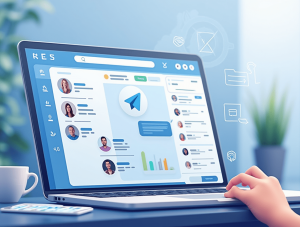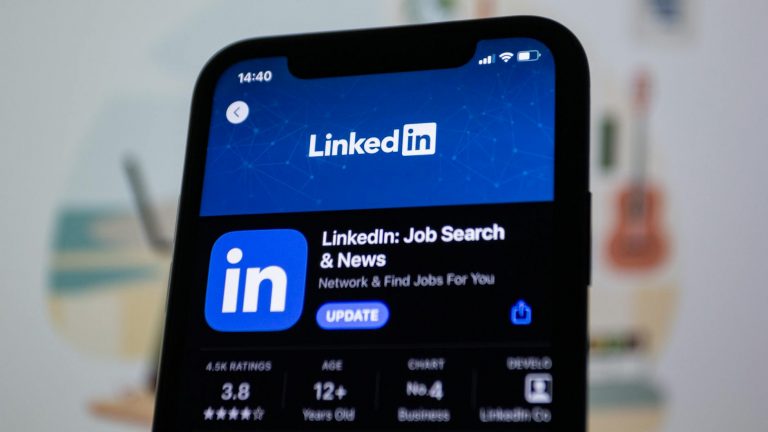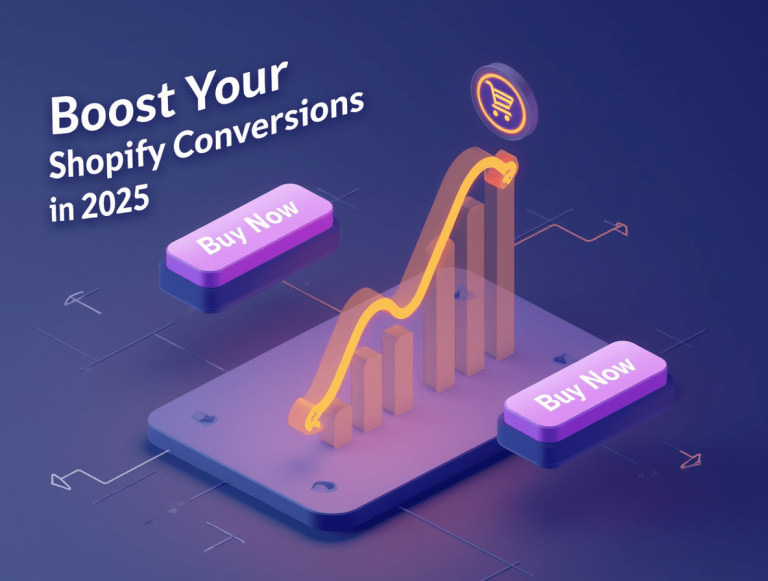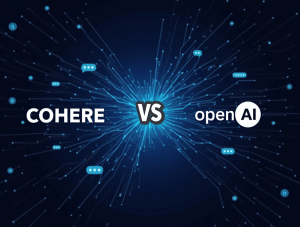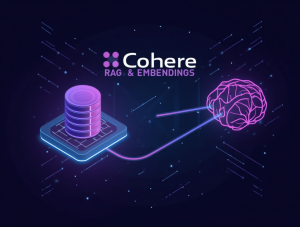
Introduction: The Enterprise AI Revolution
Businesses today face an overwhelming amount of text data—emails, documents, customer feedback, and market reports that contain valuable insights but are impossible to process manually. This is where Cohere’s language models are changing the game for enterprises.
Founded by former Google Brain researchers, Cohere has positioned itself as the go-to provider for businesses looking to implement AI language technology that’s reliable, secure, and tailored to their specific needs. Unlike general-purpose AI tools, Cohere’s approach focuses squarely on enterprise challenges and opportunities.
Let’s explore how Cohere’s language models are transforming business operations and why companies are increasingly choosing their solutions over alternatives.
What Makes Cohere’s Approach Different?
Enterprise-First Development
While many AI companies build general models and then adapt them for business use, Cohere takes the opposite approach. Their models are developed from the ground up with enterprise requirements in mind:
- Data privacy guarantees: Cohere doesn’t use client data to train its models unless explicitly permitted
- Deployment flexibility: Options for cloud-based, private cloud, or on-premises implementation
- Regulatory compliance: Built-in features that help meet industry-specific regulations
- Integration capabilities: Enterprise-ready APIs that connect with existing business systems
This enterprise-first approach means companies don’t need to compromise on security or compliance when adopting AI language technology.
The Technology Behind Cohere’s Solutions
At the heart of Cohere’s offerings are two core technologies that work together to solve business problems:
1. Command Models
Cohere’s Command models understand and generate human language with remarkable accuracy. They can:
- Draft emails and documents that match your company’s tone and style
- Summarize lengthy reports into actionable insights
- Answer complex questions based on business context
- Generate content for multiple channels and purposes
What sets Command apart is its ability to follow specific instructions with precision. Rather than providing generic responses, the model can be directed to perform exactly as needed for particular business tasks.
2. Embedding Models
Perhaps even more valuable for enterprises are Cohere’s embedding models, which transform text into numerical representations that capture meaning. These embeddings enable:
- Semantic search: Finding documents based on meaning, not just keywords
- Content categorization: Automatically organizing information by topic
- Recommendation systems: Suggesting relevant content to users based on their interests
- Anomaly detection: Identifying unusual patterns in text data
For enterprises with vast document repositories, these embedding capabilities unlock value that would otherwise remain hidden in unstructured text.
Real-World Enterprise Applications
Customer Service Transformation
Many enterprises begin their Cohere journey by enhancing customer support. Here’s how it works in practice:
- Customer queries come in through various channels (email, chat, social media)
- Cohere’s models analyze the content to understand intent and extract key information
- The system either generates an appropriate response or routes complex issues to human agents
- All interactions are stored as embeddings, making past solutions easily searchable
The results? Companies using Cohere for customer service report:
- 60-70% reduction in response times
- 40% decrease in escalations to human agents
- Higher customer satisfaction scores
- Valuable insights from automatically analyzed feedback
Knowledge Management and Discovery
For organizations drowning in documents, Cohere’s embedding technology creates an intelligent knowledge management system:
- Corporate memory: Making the collective knowledge of an organization searchable
- Research acceleration: Helping researchers find relevant information across vast literature
- Compliance monitoring: Ensuring communications and documents follow regulatory guidelines
- Institutional learning: Preserving insights when employees leave
A pharmaceutical company implementing this approach reduced research time by 35% by making decades of internal research papers instantly searchable by concept rather than just keywords.
Multilingual Business Operations
Global enterprises particularly benefit from Cohere’s strong multilingual capabilities, which support over 100 languages. This enables:
- Consistent customer experiences across markets
- Internal knowledge sharing across language barriers
- Global market research and sentiment analysis
- Standardized operations regardless of location
A retail chain operating in 12 countries used Cohere to create a unified customer service platform that maintained consistent quality across all languages, eliminating the previous disparity in service levels between markets.
How Enterprises Implement Cohere’s Technology
The Implementation Journey
Adopting Cohere’s language models typically follows these steps:
- Assessment: Identifying specific use cases where language AI adds value
- Data preparation: Organizing relevant business documents for model training
- Model selection: Choosing between Cohere’s various model sizes and specializations
- Integration: Connecting the models to existing systems through APIs
- Customization: Fine-tuning the models with industry-specific examples
- Deployment: Rolling out solutions with appropriate monitoring and controls
- Continuous improvement: Refining the system based on performance metrics
For many enterprises, this process begins with a focused pilot project that demonstrates value before expanding to other departments or functions.
The RAG Approach: Combining Models with Business Data
One of Cohere’s most powerful enterprise implementations uses Retrieval-Augmented Generation (RAG). This approach:
- Indexes company documents, policies, and knowledge bases using embedding models
- When a query comes in, retrieves the most relevant information from this index
- Uses Command models to generate accurate responses based on this retrieved information
RAG solves one of the biggest challenges in enterprise AI: ensuring responses are grounded in company-specific information rather than generic knowledge.
A financial services company implementing this approach saw a 90% accuracy improvement in policy-related queries compared to using generative AI alone, significantly reducing compliance risks.
Data Security and Governance in Enterprise AI
Cohere’s Enterprise Security Framework
For businesses handling sensitive information, security isn’t optional. Cohere’s approach includes:
- Data isolation: Client data remains separate and is never used to improve models without permission
- Encryption: End-to-end encryption of data in transit and at rest
- Access controls: Granular permissions that limit who can use AI systems
- Audit trails: Detailed logs of all system usage for compliance purposes
- Deployment options: Including air-gapped solutions for the most sensitive applications
These safeguards have made Cohere’s solutions viable even for heavily regulated industries like healthcare, financial services, and government.
Responsible AI Development
Beyond security, enterprises must consider the broader ethical implications of AI deployment. Cohere provides:
- Bias detection tools: Identifying and mitigating potential biases in AI outputs
- Explainability features: Making AI decision processes more transparent
- Usage policies: Guidelines for appropriate applications of the technology
- Monitoring systems: Flagging potential misuse or problematic outputs
These governance tools help enterprises implement AI responsibly while minimizing risks.
Case Study: Financial Services Transformation
A global financial institution with over 50,000 employees implemented Cohere’s language models across multiple departments with impressive results:
- Customer support: Reduced average response time from 24 hours to 3 hours while handling 40% more inquiries
- Compliance: Automated review of 85% of routine communications for regulatory issues
- Research: Analysts gained ability to search 15 years of reports and analysis semantically
- Employee productivity: 20% reduction in time spent creating routine documents and emails
What made this implementation particularly successful was the integration of Cohere’s models with existing company systems and databases, ensuring responses were always grounded in accurate, up-to-date information.
The Business Impact: ROI of Enterprise Language AI
When properly implemented, Cohere’s language models deliver measurable business value:
Direct Cost Savings
- Reduced need for expanding customer service teams
- Lower translation and localization costs
- More efficient document processing
- Automated routine communications
Revenue Growth Opportunities
- Faster response to market opportunities
- Enhanced customer experience leading to higher retention
- More personalized marketing and communications
- Accelerated product development through better knowledge sharing
Risk Reduction
- More consistent compliance with regulations
- Earlier detection of potential issues in communications
- Reduced dependence on key knowledge workers
- Lower risk of knowledge loss when employees leave
Companies typically see positive ROI within 6-12 months of implementation, with the most successful seeing 3-5x returns on their investment within two years.
How Cohere Compares to Alternative Enterprise Solutions
While several companies offer language AI, Cohere distinguishes itself in the enterprise space through:
- Specialized embedding models that outperform alternatives for semantic search
- Superior multilingual capabilities with consistent performance across languages
- More flexible deployment options including on-premises solutions
- Better fine-tuning with smaller datasets, requiring less example data
- Enterprise-specific safety features designed for business contexts
These advantages make Cohere particularly well-suited for enterprises with complex needs, global operations, or strict security requirements.
Future Directions: What’s Next for Enterprise Language AI
Looking ahead, Cohere’s enterprise roadmap includes several promising developments:
Domain-Specific Pre-Training
Future models will come with specialized knowledge in fields like:
- Financial services and regulations
- Healthcare and life sciences
- Legal terminology and precedents
- Manufacturing and supply chain
This pre-training will reduce the customization needed for industry-specific applications.
Enhanced Reasoning Capabilities
Upcoming models will feature improved:
- Logical reasoning for complex decision support
- Numerical analysis for financial and operational data
- Temporal reasoning for processes that unfold over time
- Multi-step planning for project management
These capabilities will expand the use cases beyond current text processing applications.
Advanced Integration Tooling
New tools will streamline integration with:
- Enterprise resource planning (ERP) systems
- Customer relationship management (CRM) platforms
- Business intelligence dashboards
- Legacy systems with specialized data formats
This will reduce implementation time and technical barriers to adoption.
Getting Started with Enterprise Language AI
For organizations considering Cohere’s solutions, these steps provide a practical starting point:
- Identify high-value use cases where language processing creates clear business value
- Start with structured data sets that are well-organized and representative
- Establish clear metrics for measuring success and ROI
- Begin with contained pilot projects before scaling to enterprise-wide implementation
- Create a cross-functional team including both technical and business stakeholders
- Develop appropriate governance for AI usage in your specific context
Most enterprises find that starting with focused applications—like enhancing an existing knowledge base or improving a specific customer service function—provides quick wins that build momentum for broader implementation.
Conclusion: The Enterprise Language AI Advantage
Cohere’s enterprise-focused approach to language AI represents a significant shift from general-purpose AI tools. By prioritizing security, accuracy, and business-specific use cases, they’ve created solutions that deliver tangible value while respecting the unique requirements of enterprise environments.
As businesses continue to grapple with growing volumes of text data and the need for more intelligent automation, Cohere’s language models offer a path forward that balances innovation with the practicality that enterprises demand.
For organizations ready to move beyond experimental AI applications to production-grade systems that deliver consistent results, Cohere’s enterprise language models provide a foundation for transformation that works within existing business constraints rather than requiring businesses to adapt to the technology.




